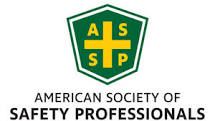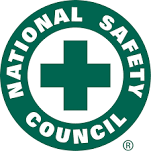A Safe Attitude - Construction Industry Regulations
Almost 40 years ago, Dennis Lawson began his working career with a giant chemical manufacturer that produced ingredients used in products from plastics to pharmaceuticals. Today he is the Health, Safety, and Fleetmanager for Royal Plus, Inc. (a member of Disaster Kleenup International), with seven locations in Maryland, Pennsylvania and Florida.
Lawson recalled his first job as an industrial fire fighter for American Cyanamid in Louisiana. Not long after starting work, he experienced his first emergency—an employee was exposed to Class A poisons.The employee had been sampling process materials as part of a standard procedure performed every two hours, and had succumbed after inhaling a large amount of hydrocyanic acid gas that had leaked through a pump seal. It was not a pretty sight. By the time Dennis’ team arrived, the employee was unconscious; he had turned blue because the chemical compound was replacing the oxygen in his blood, and he had defecated in his pants. While Dennis hosed down the pump equipment to disperse the leaking gas, the shift supervisor administered CPR and first aid to revive the employee. He was then admitted to the hospital for observation.The man had come close to death, but fortunately did not suffer long-term damage.The trauma was so severe, though, that he threw up for a long time afterward, Dennis recalls.
While relieved that the employee had survived, Lawson found that he couldn’t sleep that night after his shift. The experience had made a profound impression on him, one that has lasted his entire career: Even in the face of the gravest situation, the proper response can save a person’s life. He had experienced first-hand the value of working in an environment with well-established procedures. In this case the SOP was to have a watcher/buddy nearby wearing a self-contained breathing apparatus to quickly call for help when the worst happened.
In the restoration business, everyday hazards may not be as dramatic as clouds of poisonous gas, but the restoration work environment can pose risks not found in a static manufacturing environment. Because the work site changes continuously, lack of familiarity with each location’s potential dangers alters how those risks are monitored and avoided. Procedures must not only include carefully defined tasks, but should also emphasize the less tangible skill of situational awareness. This requires a commitment on the part of the employee—an attitude of caring and vigilance.
What does it take to get employees to acquire the right attitude about safety so they can anticipate and avoid hazards? Certainly the experience of an emotionally powerful event—the sight and smell of a dying co-worker—imprinted an unforgettable image in Dennis Lawson’s mind and influenced his approach to every position since. But one can’t wait for a harrowing near-miss situation to motivate the rank and file, and you certainly don’t want to orchestrate one just to make safety training more effective!
While it would be nice if all of your employees would memorize OSHA 29 CFR 1926.850(b) (Subpart T), plus the other 10,000 provisions in OSHA’s Construction Industry Regulations, the reality is that many feel invincible and view safety training as enthusiastically as they did high school homework. This is especially so if their training is about rules and regulations rather than behavior and culture. The result is a lack of caring—of carelessness— that increases the likelihood of injury and therefore the effort necessary to prevent it.
It is said that behavior influences attitude and attitude influences behavior. One of the most effective means of influencing both is through peer pressure or validation. (Most youngsters probably wouldn’t try smoking otherwise.) Since perception of motives affects a person’s openness to a message, it matters who is delivering thatmessage. Because of this, a rank and file employee can often be more successful in influencing fellow employees than amanager. Those who demonstrate interest and aptitude with safety procedures should be recognized and used as models for desired behavior.
Any employees who have personal experience, whether from a near-miss or actual injury to themselves or a co-worker, should be encouraged to share that with the group. Individuals from outside the company who have suffered serious, even disabling workplace injuries can be recruited to speak at safety meetings.
As happened with Dennis Lawson, the more intense the emotions associated with any experience, the more likely one is to remember and care about it in the future.To help achieve the strongest emotional impact on employees, ask presenters to explain in detail how the injury has affected their lives.The more dramatic the message, the more potential there is for a breakthrough in attitude.
As an advocate of behavior-based safety, it is this kind of people-centered approach to management that Lawson has developed. With years of experience, a psychology degree earned over a 20-year period, and four decades of study in the art of karate-do, he feels that Royal Plus is the place where he’s finally able to use all of his talents. Lawson articulated his philosophy with a simple, but profound lesson from the revered master of Okinawan karate, Gichin Funakoshi. He said, “Carelessness comes before accidents.”
You might also like






